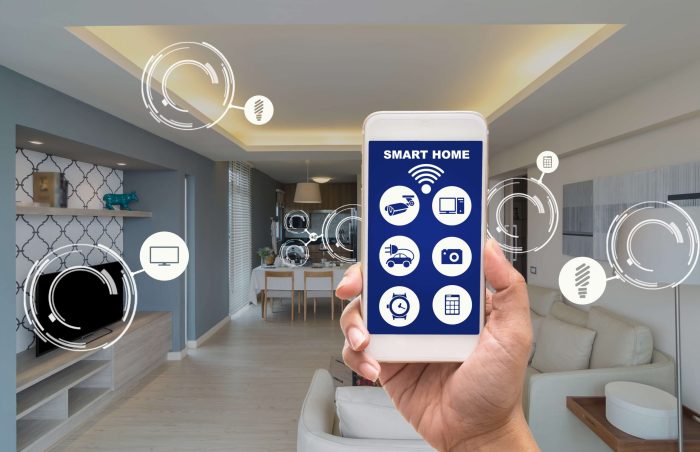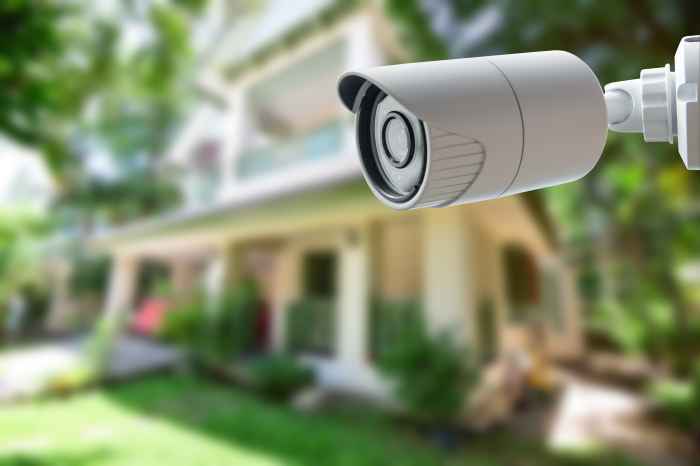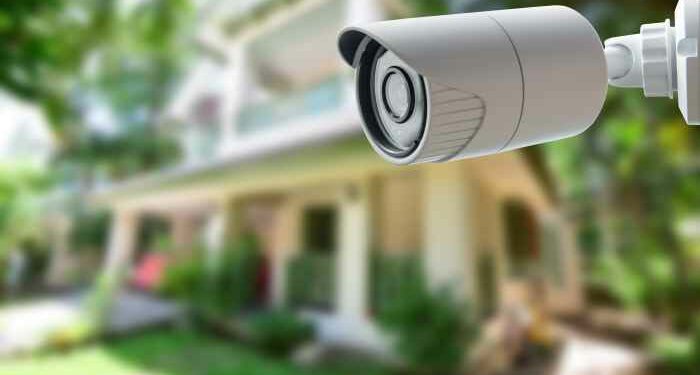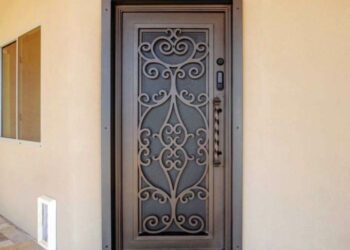Embark on a journey into the realm of smart security system installation, where safety meets innovation to protect your home or office with cutting-edge technology. From deterring intruders to seamless integration with smart devices, discover the essentials of safeguarding your space in the digital age.
Importance of Smart Security Systems
Smart security systems play a crucial role in safeguarding our homes and offices, providing a sense of protection and peace of mind. These systems offer a wide range of benefits that enhance security measures and help prevent potential threats.
Enhanced Safety Measures
Smart security systems are equipped with advanced features such as motion sensors, surveillance cameras, and remote monitoring capabilities. These technologies allow for real-time monitoring of the premises, ensuring that any suspicious activity is detected promptly.
Additionally, smart security systems can be integrated with smart locks and alarms, providing an extra layer of protection against intruders. In case of a security breach, the system can immediately alert the authorities or send notifications to the homeowner's smartphone.
Deterrence of Burglaries and Intrusions
One of the key benefits of smart security systems is their ability to deter burglaries and intrusions. The presence of visible surveillance cameras and motion sensors acts as a deterrent for potential intruders, reducing the likelihood of break-ins.
Moreover, smart security systems allow for remote access and control, enabling homeowners to monitor their property even when they are away. This level of visibility can help prevent unauthorized access and provide evidence in case of any security incidents.
Types of Smart Security Systems

Smart security systems come in various types tailored to meet different security needs. Let's explore the different types available in the market and compare their features.
Wired vs. Wireless Smart Security Systems
When it comes to smart security systems, one of the key decisions to make is choosing between wired and wireless options.
- Wired systems:
- Require professional installation due to wiring needs.
- Tend to be more reliable as they are not susceptible to wireless interference.
- Can be more secure as they are not prone to hacking compared to wireless systems.
- Wireless systems:
- Easy to install and set up without the need for drilling holes.
- Allow for flexibility in system expansion and device placement.
- Can be vulnerable to interference from other wireless devices or hacking.
Integration of Cameras, Sensors, and Alarms
Modern smart security systems often integrate a combination of cameras, sensors, and alarms to provide comprehensive protection for homes and businesses.
- Cameras:
- Offer real-time monitoring and recording of video footage.
- Can be indoor or outdoor cameras with varying resolution and viewing angles.
- Some cameras come with advanced features like night vision and motion detection.
- Sensors:
- Include door/window sensors, motion sensors, and glass break sensors.
- Trigger alarms or notifications when unusual activity is detected.
- Can be customized to suit specific security needs and preferences.
- Alarms:
- Sound audible alerts to deter intruders and alert occupants of potential threats.
- Can be integrated with monitoring services for immediate response in case of emergencies.
- Some systems allow for remote arming/disarming via mobile apps for added convenience.
Planning for Installation
When setting up a smart security system, proper planning is crucial to ensure maximum effectiveness. This involves conducting a security assessment, determining optimal camera and sensor placement, and considering various factors to enhance overall security.
Conducting a Security Assessment
Before installing a smart security system, it is essential to conduct a thorough security assessment of your property. This assessment helps identify vulnerable areas, high-traffic zones, and potential entry points for intruders. By understanding these aspects, you can strategically place cameras and sensors to provide comprehensive coverage and protection.
Optimal Camera Placement and Sensor Positioning
- Consider placing cameras at entry points such as doors and windows to capture any suspicious activity.
- Ensure cameras have a clear line of sight and are positioned at the right height to capture faces and other identifying features.
- Install cameras in well-lit areas to improve visibility and image quality, especially at night.
- Position motion sensors strategically to cover key areas of your property and trigger alerts effectively.
- Adjust sensor sensitivity levels to minimize false alarms while still detecting potential threats.
Overall, careful planning and thoughtful consideration of camera placement and sensor positioning are essential for maximizing the effectiveness of your smart security system and enhancing the security of your property
Installation Process

When it comes to installing a smart security system, it is essential to have the right tools on hand to ensure a smooth and efficient setup. The installation process typically involves setting up cameras, sensors, and alarms strategically to maximize the security coverage of your property.
Tools Required for Installing a Smart Security System
- Drill and screwdriver: These tools are essential for mounting cameras and sensors securely in place.
- Ladder: To access high areas for camera installation.
- Cables and wires: Necessary for connecting cameras, sensors, and alarms to the system.
- Power drill: For creating holes for mounting hardware.
- Level: To ensure that cameras and sensors are installed straight and level.
Installation Process for Cameras, Sensors, and Alarms
- Begin by planning the placement of cameras, sensors, and alarms based on the layout of your property and potential security vulnerabilities.
- Mount cameras in strategic locations to capture important areas such as entry points, driveways, and blind spots.
- Install sensors on doors and windows to detect any unauthorized entry into your property.
- Set up alarms to alert you in case of a security breach or suspicious activity.
- Connect all devices to the central control panel and ensure they are properly synced and functioning correctly.
Common Challenges During Installation and How to Troubleshoot Them
- Interference with wireless signals: To address this issue, make sure that cameras and sensors are not placed near devices that emit electromagnetic interference, such as microwaves or cordless phones.
- Poor connectivity: If you are experiencing connectivity issues, check the Wi-Fi signal strength in the areas where devices are installed and consider installing a Wi-Fi extender for better coverage.
- Power supply problems: Ensure that all devices are properly connected to a power source and that there are no issues with the electrical wiring.
- Incorrect placement: If you are not getting the desired coverage or detection range, consider repositioning cameras and sensors to optimize their performance.
Integration and Configuration

When it comes to smart security systems, integrating them with other smart home devices and configuring the settings properly are crucial steps in maximizing their functionality. Here's a breakdown of the process and tips for seamless integration and configuration.
Integrating with Other Smart Home Devices
- Ensure compatibility: Before integrating your smart security system with other devices, make sure they are compatible with each other.
- Use a central hub: Consider using a central hub or smart home controller to connect and control all your smart devices in one place.
- Follow manufacturer instructions: Always follow the manufacturer's guidelines for integrating devices to avoid any issues.
Configuring Settings for Remote Access and Monitoring
- Set up remote access: Configure your smart security system to allow remote access through a mobile app or web portal for monitoring your home from anywhere.
- Enable notifications: Customize settings to receive instant alerts and notifications on your smartphone for any security events or alarms.
- Create user profiles: Set up different user profiles with varying access levels to control who can view and manage the security system.
Importance of Software Updates for System Security
- Stay protected: Regularly update the software of your smart security system to ensure that it has the latest security patches and features to protect against vulnerabilities.
- Enhance performance: Software updates can also improve the performance and functionality of your security system, providing a better overall user experience.
- Prevent cyber threats: Keeping the system up to date helps in safeguarding against cyber threats and potential breaches that could compromise your home's security.
Final Conclusion
In conclusion, smart security system installation offers a proactive approach to safeguarding your premises, providing peace of mind and enhanced security measures. Stay ahead of potential threats by embracing the convenience and efficiency of modern security solutions.
FAQ Compilation
What are the main benefits of installing a smart security system?
Smart security systems offer remote monitoring, real-time alerts, and integration with other smart devices for enhanced safety and convenience.
How do wired and wireless smart security systems differ?
Wired systems require physical connections for operation, while wireless systems offer flexibility and easier installation without cables.
Why is conducting a security assessment important before installation?
A security assessment helps identify vulnerable areas and determine the optimal placement of cameras and sensors for maximum coverage.
What are the common challenges during smart security system installation?
Issues like connectivity problems, sensor calibration, and software configuration can pose challenges during installation, but can be resolved with troubleshooting steps.
How can smart security systems be integrated with other smart home devices?
Smart security systems can be connected to smart assistants like Alexa or Google Home, allowing for voice control and seamless automation of security features.












